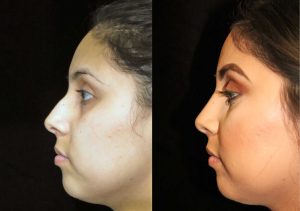Erectile dysfunction (ED) is a condition that affects a significant number of men globally, yet it remains a topic shrouded in stigma and misunderstanding. Our comprehensive guide aims to demystify erectile dysfunction by delving into its causes, symptoms, diagnosis, and treatment options. By providing accurate and detailed information, we hope to offer a valuable resource for those seeking to understand and manage this condition.
What is Erectile Dysfunction?
Erectile dysfunction, commonly known as ED, is the inability to achieve or maintain an erection sufficient for satisfactory sexual performance. It is a prevalent condition that can affect men of all ages but is more common in older adults. While occasional difficulty with erections is not unusual, persistent issues may indicate the presence of ED.
Causes of Erectile Dysfunction
Physical Causes
Cardiovascular Diseases: Conditions such as hypertension, atherosclerosis, and heart disease can impede blood flow to the penis, making it difficult to achieve an erection.
Diabetes: Men with diabetes are at a higher risk of developing ED due to nerve damage and impaired blood flow.
Obesity: Excessive weight can lead to vascular disease and diabetes, both of which are known to contribute to erectile dysfunction.
Hormonal Imbalances: Low levels of testosterone and other hormonal issues can significantly impact sexual function.
Neurological Disorders: Conditions such as Parkinson’s disease, multiple sclerosis, and spinal cord injuries can interfere with nerve signals involved in the erection process.
Medications: Some drugs prescribed for high blood pressure, depression, and other conditions can cause ED as a side effect.
Psychological Causes
Stress and Anxiety: Psychological stress and anxiety can disrupt the signals between the brain and the body that are necessary for an erection.
Depression: This mental health disorder can lead to a loss of interest in sexual activity and erectile difficulties.
Relationship Issues: Interpersonal problems and lack of communication with a partner can also contribute to ED.
Symptoms of Erectile Dysfunction
The primary symptom of erectile dysfunction is the inability to get or keep an erection. Other symptoms may include:
- Reduced sexual desire: A noticeable decrease in interest in sexual activity.
- Trouble maintaining an erection: Difficulty in keeping an erection during sexual activities.
- Delayed or absent ejaculation: Problems with reaching ejaculation.
Diagnosis of Erectile Dysfunction
Medical History and Physical Examination
A thorough medical history and physical exam are the first steps in diagnosing ED. This process includes:
- Review of medical conditions: Understanding existing health issues that might contribute to ED.
- Medication review: Identifying any drugs that could be affecting sexual performance.
- Physical exam: Assessing the physical health, particularly focusing on the genitals and circulatory system.
Laboratory Tests
Blood Tests: To check for diabetes, heart disease, and low testosterone levels.
Urine Tests: To look for signs of diabetes and other underlying health conditions.
Other Diagnostic Tests
Ultrasound: Used to examine blood flow to the penis.
Nocturnal Penile Tumescence (NPT) Test: This test evaluates the occurrence of erections during sleep, helping to determine if ED has a physical or psychological cause.
Psychological Examination: To identify psychological factors contributing to ED.
Treatment Options for Erectile Dysfunction
Lifestyle Changes
Exercise: Regular physical activity improves blood flow and reduces the risk of cardiovascular diseases and obesity.
Healthy Diet: A diet rich in fruits, vegetables, whole grains, and lean proteins can help improve ED symptoms.
Quit Smoking: Smoking cessation is crucial as smoking can damage blood vessels and restrict blood flow to the penis.
Limit Alcohol: Reducing alcohol consumption can improve erectile function.
Medications
Phosphodiesterase Type 5 Inhibitors (PDE5 Inhibitors): Commonly prescribed ED medications such as sildenafil (Viagra), tadalafil (Cialis), and vardenafil (Levitra) work by enhancing the effects of nitric oxide, a natural chemical the body produces to relax muscles in the penis.
Testosterone Replacement Therapy: For men with low testosterone levels, hormone replacement therapy may be recommended.
Therapies
Psychotherapy: Counseling and therapy can be beneficial, especially if psychological factors such as stress, anxiety, or depression are contributing to ED.
Couples Therapy: Therapy sessions involving both partners can help improve communication and resolve relationship issues impacting sexual function.
Medical Procedures
Penile Implants: Surgical insertion of devices into both sides of the penis. These implants can be either inflatable or malleable.
Vascular Surgery: In rare cases, surgical intervention may be needed to repair blocked arteries that restrict blood flow to the penis.
Alternative Treatments
Acupuncture: Some studies suggest that acupuncture might help with erectile dysfunction.
Herbal Supplements: Ginseng, L-arginine, and other supplements are sometimes promoted for ED, but their effectiveness and safety are not always backed by rigorous research.
Preventing Erectile Dysfunction
While not all causes of ED are preventable, certain lifestyle choices can reduce the risk:
- Maintain a healthy weight: Being overweight can cause or worsen ED.
- Stay active: Regular exercise can help prevent ED.
- Eat a balanced diet: Proper nutrition supports overall health, including sexual health.
- Avoid smoking and excessive alcohol: Both can contribute to ED.
- Manage stress: Finding healthy ways to cope with stress can improve sexual function.
Conclusion
Erectile dysfunction is a complex condition with multiple causes, but it is also highly treatable. Understanding the underlying factors and exploring the wide range of treatment options can significantly improve quality of life. If you are experiencing symptoms of ED, it is important to speak with a healthcare provider to determine the best course of action tailored to your individual needs.











